Experiments in Digital Manufacturing with Cochineal
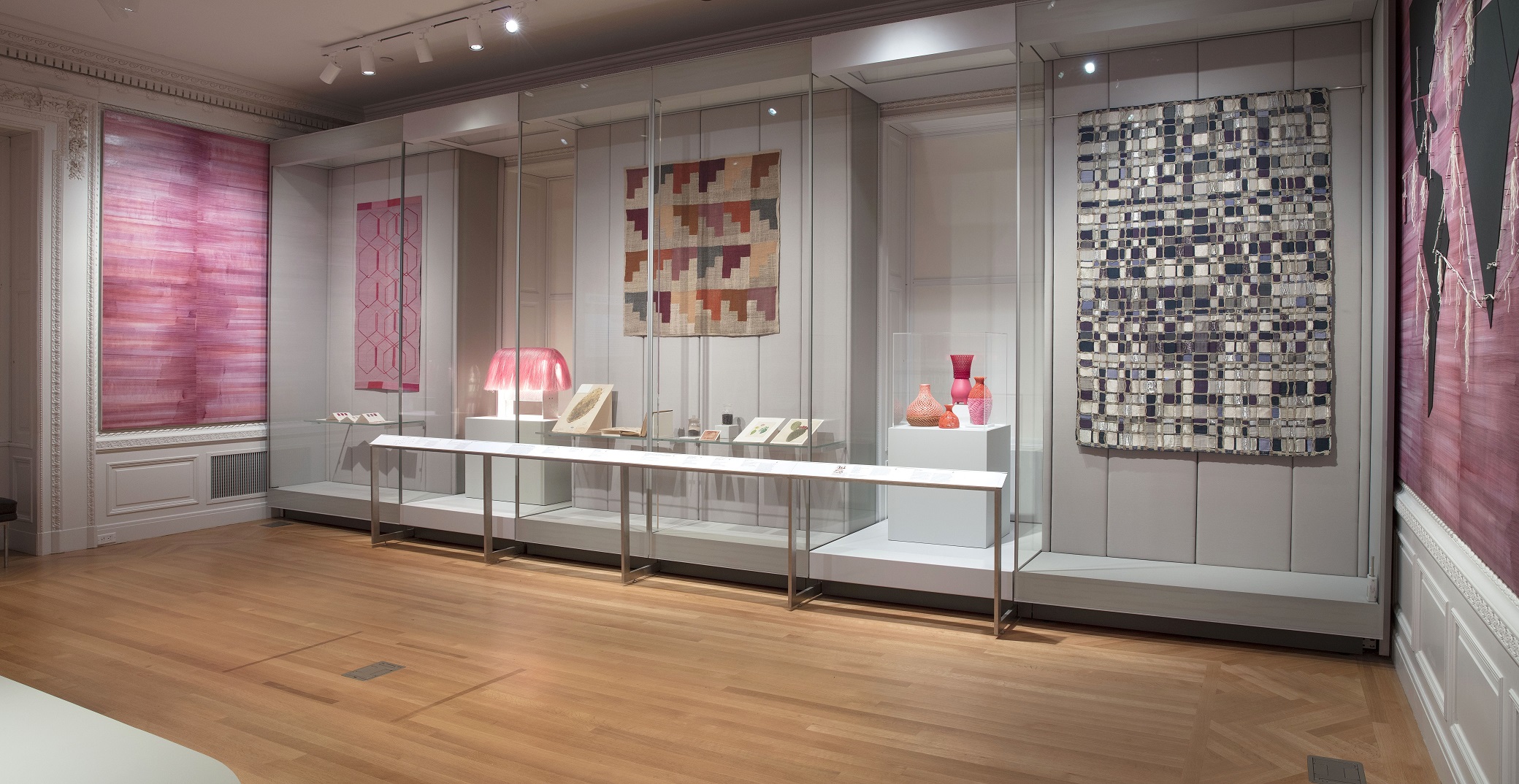
Installation view of Nature by Design: Cochineal. Photo: Matt Flynn © Smithsonian Institution

Installation view of Nature by Design: Cochineal. Photo: Matt Flynn © Smithsonian Institution
Grana vs. La Máquina, or “Cochineal vs. The Machine,” was an academic project initiated by the School of Architecture, Art, and Design at Tecnológico de Monterrey, Mexico City, in collaboration with Cooper Hewitt, Smithsonian Design Museum in New York. Inspired by the exhibition Nature by Design: Cochineal, on view at Cooper Hewitt through May 25, 2020, this project sought to generate a critical response around the relationship between design and Mexican culture by making objects using cochineal and digital manufacturing. Led by José de la O (Studio José de la O) in collaboration with Christina De León, Associate Curator of Latino Design at Cooper Hewitt, the project was carried out at two Tec Monterrey campuses in the Mexico City region (CEM and CCM) with industrial design students in their senior year.
Nature by Design: Cochineal explores the legacy of cochineal and its innovative use among contemporary designers. Cochineal, a small parasitic insect, was for centuries the source of a red dye that held economic and cultural importance to indigenous peoples of Mexico. Upon European contact in the sixteenth century, it became a widely traded global commodity until the invention of synthetic dyes in the mid-nineteenth century, which caused its profit value to diminish significantly. With this context in mind, students were challenged to design and fabricate a digital manufacturing machine using cochineal as the primary material to produce objects that would stimulate discussion or criticism on Mexican culture.
The students used critical design research methodologies to generate questions on socio-cultural issues such as national identity, craftsmanship, economy, and mysticism. Critical or speculative design is a discipline that uses design tools as a way to understand and address complex societal problems. With the collaboration of De León, students received feedback on their narrative and concept development, fabrication techniques, and innovative uses of cochineal.
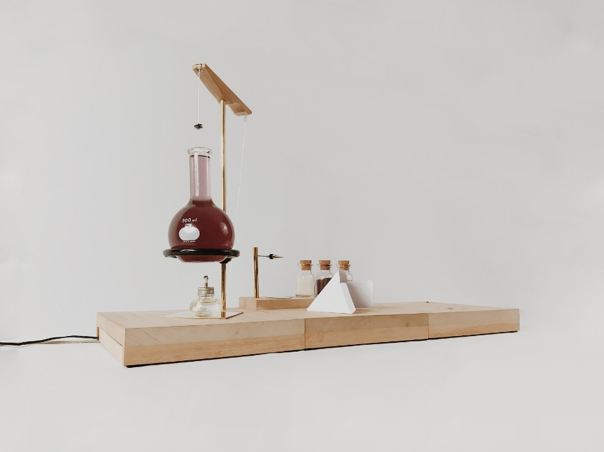
According to a survey prepared by CONACYT (National Council of Science and Technology) and INEGI (National Institute of Statistics and Geography) in Mexico, 72.59% of the population trust faith more than science. People resort to amulets, rituals, astrology, tarot, palmistry, and prayers with the intention of having more control over their lives. Playing with the illusion of palmistry, Fortuna creates a candle made of cochineal pigment that can improve your life. A sensor detects the presence of the hand in the reading area and subsequently, by means of a random code, the machine decides which candle it will manufacture, thus assuming the role of authority figure on the “luck” of the user.
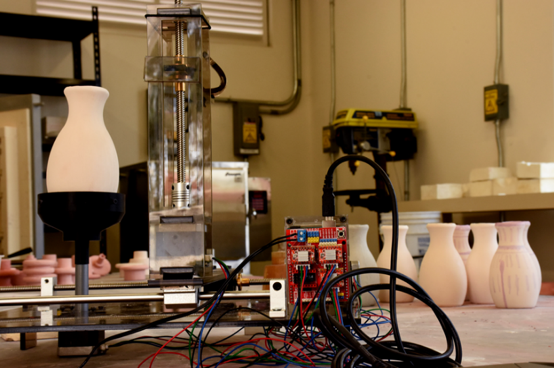
GranArtesana is a machine that aims to analyze the perception of craftsmanship in Mexico through the production of an object, using cochineal as the key material. Since Pre-Hispanic times, this natural dye has been used by artisans, the knowledge and expertise needed to manipulate the material transmitted from one generation to the other. Using mechanical brushes, this machine decorates a small vase using cochineal pigment, prompting the question: Is it possible to replicate traditional hand craftsmanship through a machine, and how will we know with certainty when work is done by a craftsman?
REDCISM is a product that uses cocoa and cochineal, both originally from Mexico, as a material to portray discrimination in Mexican society. A CNC milling machine draws a graph representing the daily use of six racist hashtags in Mexico on Twitter: #Whitexican, #Fresa, #Fifi, #Naco, #Prieto, and #Indio. Using various tones of cochineal based on the Latin American skin tone scale called PERLA, layers of chocolate imbued with cochineal represent various skin tones and the racist hashtags used in the country.
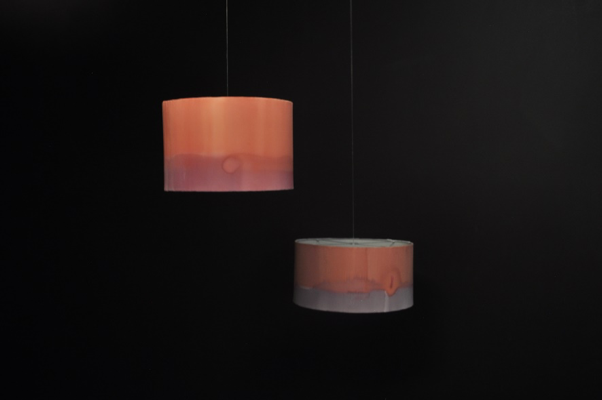
Tinta Mexicana is a collection of lamps that together represent Mexican society and culture. Each lamp embodies a significant contemporary event that has influenced Mexican identity. The cochineal ink serves as a reference and element of pigmentation. Each change in temperature, each variation in concentration, each slight movement of factors completely changes their identity, just as the Mexican identity is influenced by each experienced event. The lamps are pigmented by a machine that uses two airbrushes loaded with relevant data from each event to highlight their effects on identity.
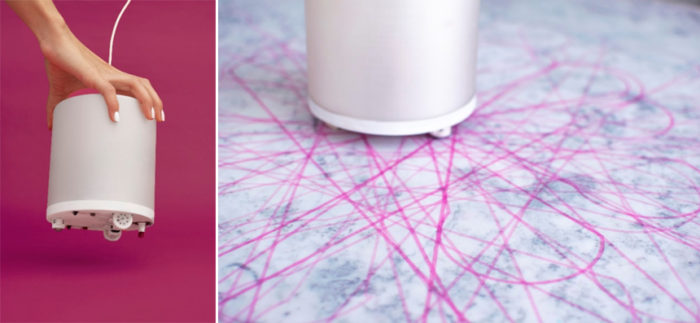
In Pre-Hispanic and colonial times, cochineal was recognized for its value, treasured for its exclusivity, usefulness and quality. Upon the invention of artificial colorants its value decreased, going unnoticed by most even when used in products that are consumed daily. In this vein, cochineal allows us to demonstrate the concept of value through time. The machine uses data recorded in the Mexican Stock Exchange index to create a pattern that shows the volatility of the market throughout contemporary Mexican history, which is then transferred onto a marble surface with cochineal ink.
Large cosmetic companies use an obscure economic tool called “the lipstick effect.” During a recession or a crisis, the sale of lipsticks increases, becoming an informal economic indicator that helps determine the behavior of a local market. This digital manufacturing machine that, through a process of removal, produces red lipsticks made from cochineal with different thicknesses, heights, and inclinations. The project aims to visually represent three current economic indicators so that spectators can interpret the economic situations of each country.
Featured Image: Installation view of Nature by Design: Cochineal. Photo: Matt Flynn © Smithsonian Institution